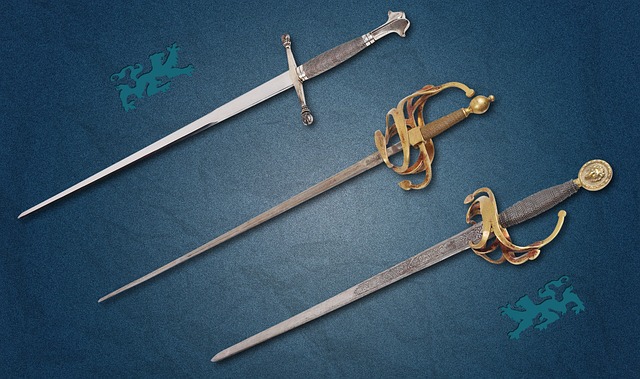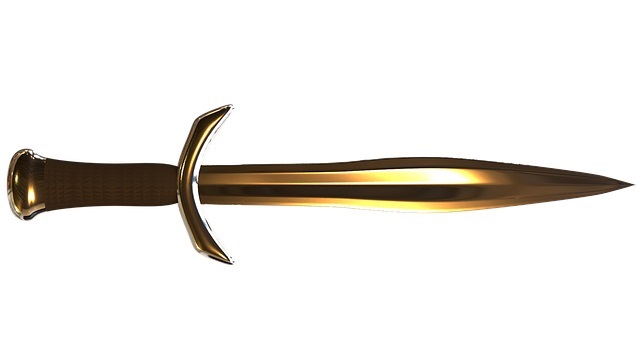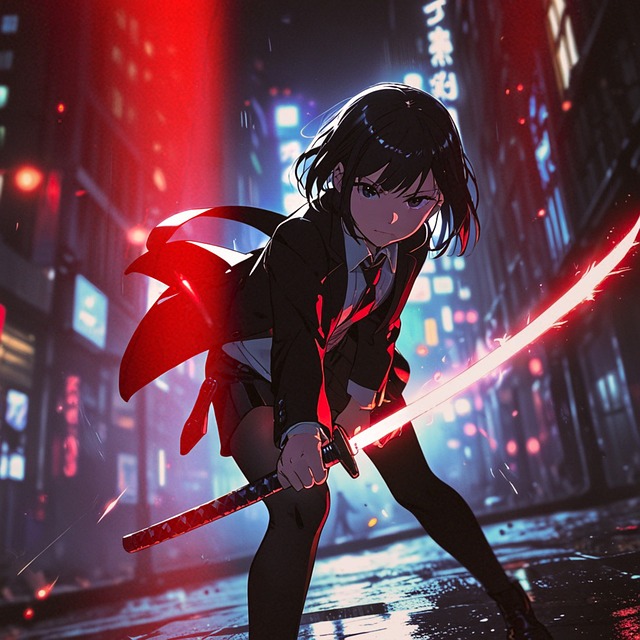Introduction to the Claymore Sword
The claymore sword is a legendary weapon that has captured the imagination of history enthusiasts, sword collectors, and popular culture enthusiasts alike. As an experienced writer, I’m thrilled to delve into the rich history, unique design, and enduring legacy of this iconic Scottish sword.
The claymore, also known as the “two-handed sword,” is a formidable and distinctive weapon that has played a significant role in the military history of Scotland. With its impressive size, intricate craftsmanship, and symbolic significance, the claymore has become a symbol of Scottish pride and warrior heritage. In this comprehensive article, we’ll explore the fascinating story behind this legendary blade, its design and features, its famous wielders, and its enduring presence in popular culture.
Historical Significance of the Claymore Sword
The claymore sword has a rich and storied history that dates back to the 15th century. This powerful weapon emerged as a symbol of Scottish military might and was widely used by Scottish warriors, particularly during the Wars of Scottish Independence and the Jacobite risings.
The claymore’s origins can be traced to the two-handed swords used by Scottish highlanders, who valued the weapon’s impressive reach and devastating striking power. As the Scottish clans consolidated their power and engaged in fierce battles against their English rivals, the claymore became an integral part of their arsenal, striking fear into the hearts of their opponents.
The claymore’s significance extended beyond the battlefield, as it also served as a symbol of status and prestige within Scottish society. Clan chiefs and noble warriors would often commission elaborately decorated claymores, adorned with intricate designs and inscriptions, to showcase their wealth, power, and allegiance to their clan.
The Design and Features of the Claymore Sword
The claymore sword is a truly distinctive and iconic weapon, with a design that sets it apart from other European swords. The most striking feature of the claymore is its sheer size and weight, with a typical blade length ranging from 40 to 55 inches and a total weight of up to 6 pounds.
The claymore’s blade is characterized by its broad, double-edged design, which was intended to deliver powerful, sweeping strikes. The crossguard, or “quillons,” is typically long and straight, providing the wielder with a secure grip and additional striking power. The pommel, often ornately decorated, served to balance the weight of the blade and prevent the sword from slipping from the user’s hand during combat.
Another unique aspect of the claymore is its distinctive basket hilt, which was designed to protect the user’s hand from enemy blows. This hilt, with its intricate metalwork and often-decorated components, not only served a practical purpose but also added to the sword’s overall visual appeal and symbolic significance. 
Famous Wielders of the Claymore Sword
The claymore sword has been wielded by numerous legendary Scottish warriors throughout history, each leaving their mark on the weapon’s enduring legacy. One of the most famous claymore wielders was Sir William Wallace, the 13th-century Scottish knight who led a successful rebellion against the English during the Wars of Scottish Independence.
Another iconic claymore-wielding figure is Alasdair MacColla, a 17th-century Scottish military commander who played a crucial role in the Jacobite risings. MacColla’s skill and prowess with the claymore were renowned, and he is often depicted in historical accounts and artistic representations wielding the formidable weapon.
In more recent times, the claymore has been associated with the legendary Scottish regiment, the Black Watch, which has a long and distinguished history of service. The Black Watch’s iconic use of the claymore has cemented the weapon’s place in the collective consciousness of both Scottish and military history enthusiasts.
The Claymore Sword in Popular Culture
The claymore sword’s striking appearance and rich history have made it a popular subject in various forms of popular culture. From literature to film and television, the claymore has been featured prominently, often serving as a symbol of Scottish identity, warrior heritage, and the enduring spirit of the Scottish people.
One of the most well-known depictions of the claymore in popular culture is in the acclaimed Mel Gibson film “Braveheart,” which showcases the weapon’s use in the hands of the heroic William Wallace. The claymore’s appearance in this film, along with its use in other historical dramas and fantasy franchises, has helped to cement its status as a legendary and iconic weapon.
In the realm of literature, the claymore has been featured in numerous works of historical fiction and fantasy, with authors often using the weapon to evoke the rugged and formidable nature of their Scottish protagonists. From Diana Gabaldon’s “Outlander” series to George R.R. Martin’s “A Song of Ice and Fire,” the claymore has become a recurring and beloved element in the world of storytelling.
Collecting and Preserving the Claymore Sword
For sword enthusiasts and collectors, the claymore represents a unique and highly sought-after treasure. As a symbol of Scottish heritage and military prowess, the claymore has become a coveted item for those who appreciate the craftsmanship, history, and cultural significance of this legendary weapon.
Authentic claymore swords are rare and highly valuable, with many surviving examples residing in museums and private collections around the world. These historical artifacts are meticulously preserved and studied by scholars and collectors alike, who strive to understand the intricacies of their design, construction, and historical context.
In addition to the preservation of original claymore swords, there is also a thriving market for high-quality reproductions and replicas. These modern interpretations of the claymore allow enthusiasts to own and display a piece of this iconic weapon, while also providing a more affordable option for those who may not have access to the rarer and more valuable original pieces.
The Value and Market for Claymore Swords
The claymore sword has long been a highly valued and sought-after item in the world of antique and collectible weapons. The combination of its historical significance, impressive craftsmanship, and cultural symbolism has made the claymore a prized possession for collectors and museums alike.
Authentic claymore swords from the 15th to 18th centuries can fetch staggering prices at auction, with some examples selling for tens of thousands of dollars. These rare and well-preserved specimens are highly coveted by collectors who understand the significance and rarity of these historical artifacts.
In addition to the market for original claymore swords, there is also a thriving demand for high-quality reproductions and replicas. These modern interpretations of the claymore, often crafted using traditional techniques and materials, allow enthusiasts to own a piece of this iconic weapon without the exorbitant price tag of an original.
Replicas and Reproductions of the Claymore Sword
While the market for authentic claymore swords is limited and highly exclusive, the demand for high-quality replicas and reproductions has continued to grow in recent years. These modern interpretations of the claymore offer enthusiasts and collectors the opportunity to own a piece of this legendary weapon without the prohibitive cost of an original.
Replica claymore swords are often crafted using traditional materials and techniques, ensuring that they closely mimic the appearance and craftsmanship of the original blades. These reproductions can range in quality and price, with some being more affordable and others approaching the level of craftsmanship found in the historical artifacts.
For those who are interested in owning a claymore sword but may not have the resources to acquire an original, these replicas and reproductions provide a viable alternative. They allow enthusiasts to display and handle a piece of Scottish history, while also serving as a more accessible option for those who wish to incorporate the claymore into their collections or personal displays.
Tips for Caring for and Displaying the Claymore Sword
Owning a claymore sword, whether an original or a high-quality replica, comes with the responsibility of proper care and display. As these weapons are not only valuable but also culturally significant, it is essential to ensure that they are maintained and showcased in a manner that preserves their integrity and historical significance.
One of the most important aspects of caring for a claymore sword is proper storage and handling. These weapons should be kept in a climate-controlled environment, away from direct sunlight and moisture, to prevent damage to the blade, hilt, and other components. When handling the sword, it is crucial to use gloves and to avoid touching the blade directly, as the oils from the skin can cause corrosion over time.
When it comes to displaying a claymore sword, the goal should be to showcase the weapon in a way that highlights its beauty, craftsmanship, and historical context. This may involve mounting the sword on a wall, placing it in a protective display case, or incorporating it into a larger collection or exhibition. Regardless of the display method, it is essential to ensure that the sword is securely held in place and protected from potential damage.
Conclusion: The Enduring Legacy of the Claymore Sword
The claymore sword is a true icon of Scottish heritage and military history, a weapon that has captured the imagination of people around the world. From its origins on the battlefields of medieval Scotland to its enduring presence in popular culture, the claymore has become a symbol of the indomitable spirit and warrior prowess of the Scottish people.
As an experienced writer, I have been honored to delve into the rich history and captivating story of this legendary weapon. The claymore’s unique design, impressive size, and cultural significance make it a truly remarkable and awe-inspiring object, one that continues to inspire and captivate those who appreciate the art of swordsmanship and the enduring legacy of Scottish heritage.
If you’re as fascinated by the claymore sword as I am, I encourage you to explore the world of sword collecting and preservation. Whether you’re interested in acquiring a high-quality replica or learning more about the history and significance of this iconic weapon, there are countless resources available to help you on your journey.Visit our website at [website URL] to browse our selection of claymore sword replicas and learn more about the art of sword collecting and preservation. Together, let’s celebrate the enduring legacy of the claymore and preserve the rich history of this legendary Scottish weapon.



